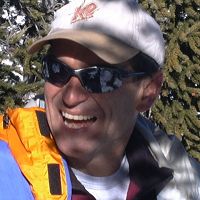Broxton et al., 2015
Quantifying the effects of vegetation structure on snow accumulation and ablation in mixed-conifer forests
Broxton P. D., Harpold A. A., Biederman J. A., Troch P. A., Molotch N. P., and Brooks P. D. (2015)
Ecohydrology 8(6): 1073-1094 Cross-CZO
-
Boulder, Catalina-Jemez, INVESTIGATOR
-
Catalina-Jemez, INVESTIGATOR
-
Boulder, Sierra, INVESTIGATOR
-
Catalina-Jemez, INVESTIGATOR
Abstract
Snow Physics and LiDAR Mapping model schematic showing the relevant model processes and illustrating the data requirements of the model.
Snowmelt from forested, mountainous environments in the western United States is a critical regional water resource for streamflow and ecological productivity. These landscapes are undergoing rapid changes from the combined effects of forest fires, insect infestation and climate change. Numerous observational studies demonstrate that trees control snowpack accumulation and ablation over scales of tens of metres. Representing forest heterogeneity in models is important for understanding how changes in climate and vegetation cover affect the snowpack; yet, many snow models simplify a forest into two categories: canopy covered and non-canopy covered. We combine existing parameterizations of mass and energy fluxes within a new three-dimensional framework informed by Airborne Laser Swath Mapping (ALSM)-derived canopy maps and evaluated with ALSM-derived snow depth maps to explicitly simulate snow cover in relation to heterogeneous canopy. Model results capture much of the observed snow variability depicted in the 1-m ALSM-derived snow depth maps. Observations and modelled results identify open areas <15 m from tree canopies as having more snow and more snow variability than areas >15 m from tree canopies, and modelled results predict that open areas <15 m from tree canopies have 30–40% more net snow water input than areas that are underneath tree canopies and 10–25% more net snow water input than areas that are >15 m from tree canopies. Furthermore, 1-m simulations give higher estimates for net snow water input than coarser resolution simulations, mainly in areas with fewer trees. These results suggest the importance of explicitly representing canopy edges in snow models.
Citation
Broxton P. D., Harpold A. A., Biederman J. A., Troch P. A., Molotch N. P., and Brooks P. D. (2015): Quantifying the effects of vegetation structure on snow accumulation and ablation in mixed-conifer forests. Ecohydrology 8(6): 1073-1094. DOI: 10.1002/eco.1565
 This Paper/Book acknowledges NSF CZO grant support.
This Paper/Book acknowledges NSF CZO grant support.
Explore Further





